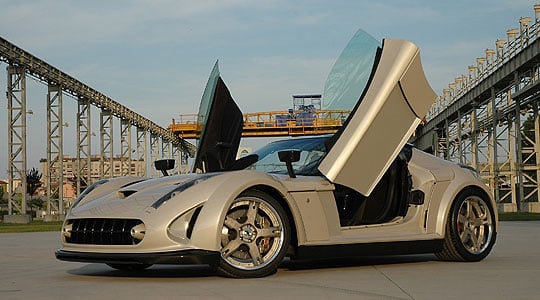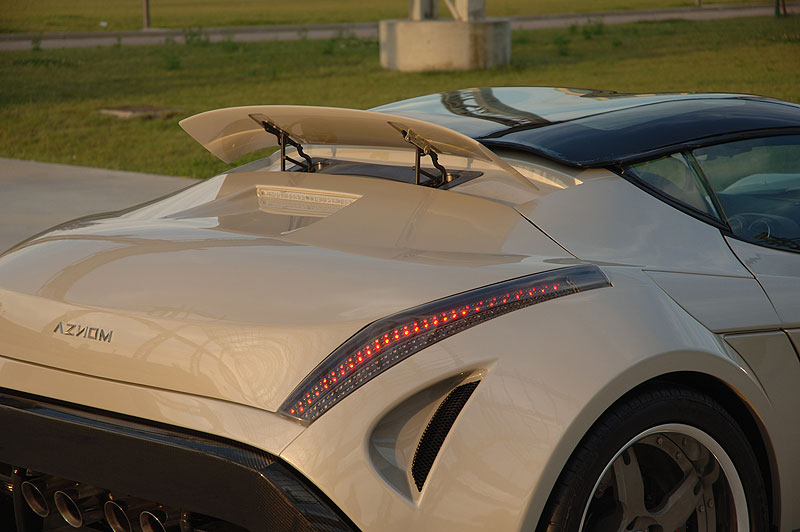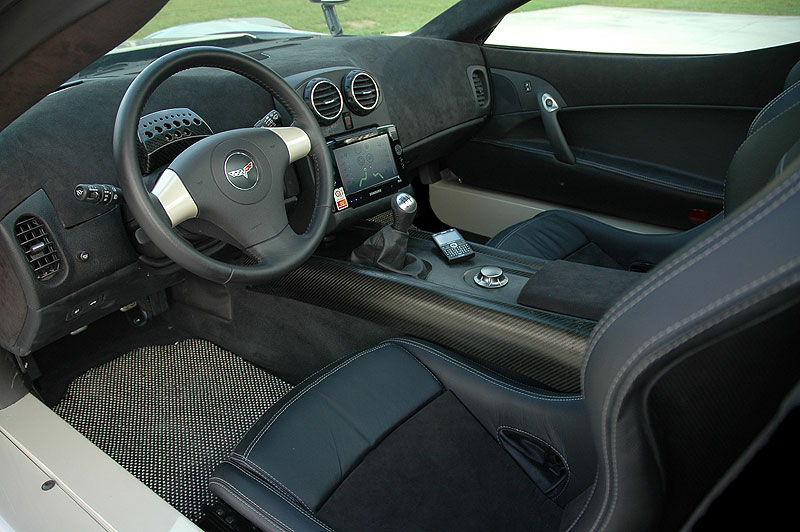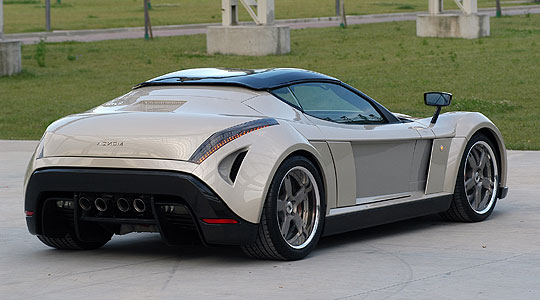
“The Aznom is dedicated to track-day drivers,” says designer Gioacchino Acampora, describing the car from Castagna Milano. It’s intended specifically for the racetrack and three basic concepts underpin its design: lightness, aerodynamics and mechanics. One glance at the exterior, however, is enough to tell you that styling plays a pretty big part in the project, too.
The aim, as far as appearance is concerned, was to “combine modern technical form with tradition” – and when Castagna talks about tradition, they mean largely American tradition. There is much about the Aznom that pays homage to the early Corvette.
The real innovation, however, is the option to remove, integrate and re-assemble the 84 structural carbonfibre components that make up the vehicle, using performance kits designed by Castagna’s aerodynamics engineers, according to conditions at the race track. Take, for example, the car’s tail-end and undercarriage, as well as the front splitter, all of which can readily be removed. The car’s rigidity has also allowed the fitting of a removable, carbonfibre roof, which can be stowed away in the 400-litre boot.


Inside the car, the symmetrical dashboard is characterised by the absence of traditional
instrumentation. This has been replaced by a heads-up display projected onto the windscreen, complemented by LED indicator lights and rev-counter on the steering wheel hub. The Sparco seats are carbonfibre, with electric adjustment and memory.
According to Castagna, the mechanics of the vehicle include most of the technical specifications adopted for FIA GT racing, which make this vehicle “both reliable and a winner”. It boasts independent suspension, lightened by the use of adjustable Motul dampers in place of coil springs, and torsion bars with a titanium adjustment mechanism. In addition, the forged, 20-inch wheels and latest Brembo ultra-lightweight brakes successfully reduce unsprung weight.

But what of the heart of the machine? The 7.0-litre 8-cylinder engine is fitted with two centrifugal turbochargers, one for each bank of cylinders, raising the engine’s power output to 820HP and providing 980Nm of torque. In a vehicle weighing 1320kg, that’s going to make things fairly sprightly: 0-62mph is achieved in just 3.4 seconds. And the price? Well, there isn’t one – not a fixed one, at least. Since each car is tailor-made for the customer, no specific price can be quoted, but it starts at around 1,000,000 euro.
Text: Charis Whitcombe
Photos: Castagna
ClassicInside - The Classic Driver Newsletter
Free Subscription!




